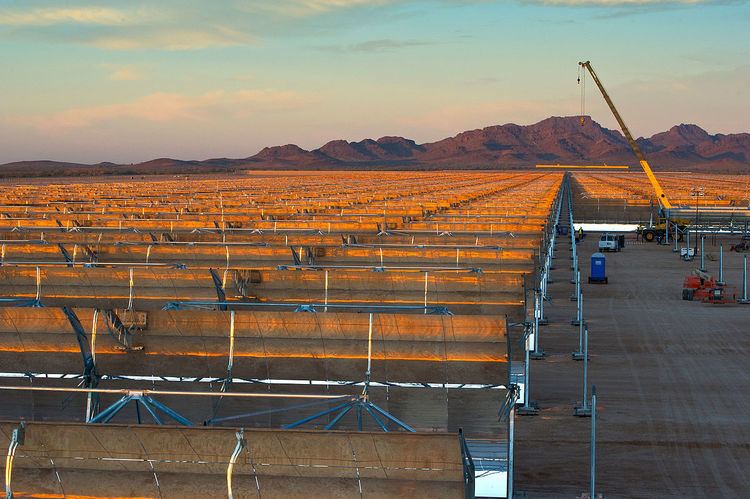Country United States Status Operational Site area 7.77 km² Construction cost 2 billion USD Units operational 2 | Commission date 2013 Type CSP Construction began December 2010 | |
 | ||
Similar Genesis Solar Energy Pr, Nevada Solar One, Solar power plants in t, Desert Sunlight Solar Farm, DeSoto Next Generatio | ||
Solar impulse solana generating station near phoenix insider
The Solana Generating Station is a solar power plant near Gila Bend, Arizona, about 70 miles (110 km) southwest of Phoenix, completed in 2013. When commissioned it was the largest parabolic trough plant in the world and the first U.S. solar plant with molten salt thermal energy storage. Built by the Spanish company Abengoa Solar, it has a total capacity of 280 megawatts (MW) gross, from two 140 MW gross (125 MW net) steam turbine generators, which is enough to power 70,000 homes while avoiding around 475,000 tons of CO2 every year. Its name is the Spanish term for "sunny spot".
Contents
- Solar impulse solana generating station near phoenix insider
- Technology
- Economics
- Energy storage
- Production
- References
Technology
The plant employs a proprietary concentrating solar power (CSP) trough technology developed by Abengoa, and covers an area of 1,920 acres (780 ha). Construction was expected to create about 1,500 construction jobs with the plant employing 85 full-time workers. Solar thermal plants use substantially more water for cooling than other solar generating technologies. Nevertheless, the Sierra Club supports the Solana plant, because it will be built on private land, and use "75 to 85 percent less water than the current agricultural use."
Economics
Arizona Public Service (APS) has contracted to purchase 100% of the power output generated from Solana, to meet the Arizona Corporation Commission's (ACC) mandate that the state's regulated utilities provide 15% of their electricity from renewable energy sources by 2025. APS will pay about 14 cents per kWh. The Solana plant was originally planned to open in 2011 and was estimated to cost $2 billion. In December 2010, Abengoa received a $1.45 billion loan guarantee to support construction of the plant.
Energy storage
One of the principal advantages of concentrated solar thermal (CST) is that thermal energy storage can be provided efficiently, so that output can be provided after the sun goes down, and output can be scheduled to meet demand requirements. The Solana Generating Station is designed to provide six hours of energy storage. This allows the plant to generate about 38 percent of its rated capacity over the course of a year.
Production
Solana Generating Station's production is as follows.
Projected full production is 944,000 MW·h (994 GW·h). At the end of the second full year of operation, the Solana Generating Station is still operating 25 percent below the projected full production value.
